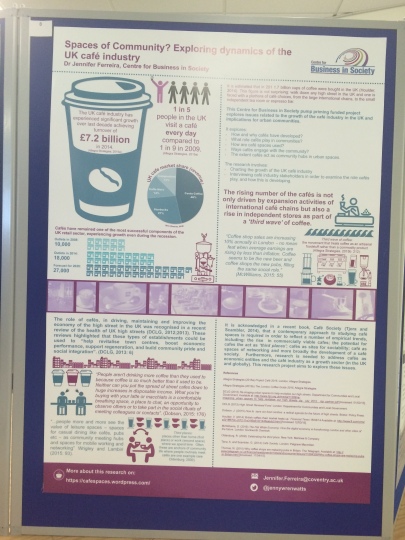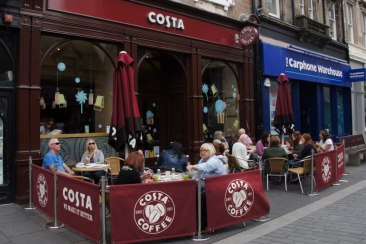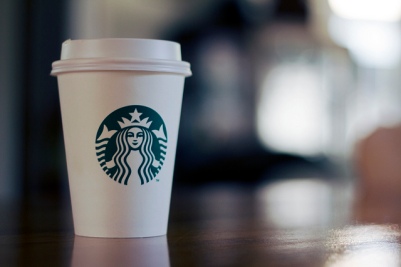This Adobe Advertisement pretty much sums it up.
Content is King – Digital Marketing Trends of the Future
Social media has pioneered a new age of communication between brands and consumers. Now more than ever brand needs to have something to say.
Up until now ‘how about the weather?’ conversations, while dwindling, have not been as scrutinised. Now consumers demand more from brands, they want to be intrigued, entertained or informed in a meaningful way. Consumers need to spend ‘quality time’ with the brand or else they will spend it elsewhere.
Kretchmer (2004:39) discusses the rise in popularity of ‘advertainments’ which she defines as ‘entertainment content that mimics traditional media forms but is created solely as a vehicle to promote specific advertisers’. This concept embodies the tactic that needs to be used by advertisers in order to create content that is successful. The advertainment concept is already being employed in creating viral ads, but needs to happen in a different manner.
Advertainment is not necessarily reserved for funny content. It is also being used by virtually any brand; the fashion industry has been producing style guides for years, furniture retailers now focus on design and lifestyle type content and cosmetics companies now routinely publish tutorials and tips and tricks.
With the increasing popularity of ad blocking application having a non-intrusive way to communicate with consumers is paramount. The only way to do so is to provide them with content they will actively seek out.
References:
Kretchmer, S. (2004) ‘Advertainment: The Evolution of Product Placement as a Mass Media Marketing Strategy’ Journal of Promotion Management, 10(1), 37-54.

Spaces Of Community? Exploring Dynamics of the UK Café Industry
Coming from various backgrounds, we are curious to learn more about the English culture. The UK café industry is perticularly intriguing as it is very different to other countries around the world.
We had the opportunity to meet Dr Jennifer Ferreira, a senior research assistant in the Centre for business at Coventry University (who complete her PhD in 2013 with main research interest in the areas of economic geography, local and regional economic development and comparative institutional system) during a poster exhibition at Coventry University (30/06/2015), where we, as a group of marketing students, observed her poster which was particularly visual. We then spoke with her about her poster and questioned her about her findings, she answered all our questions precisely and politely.

To sum up the poster content, it highlights the café industry growth and trend in the UK. The poster is divided into four parts containing relevant market statistics, trends and references.
From a digital marketing perspective the poster is about “community” notion and it could be offline and online. Coffee, as a beverage, has generally grown in popularity in the UK with 70 million cups of coffee being consumed on a daily basis. This consumption popularity is particularly evident in the younger age-group. However, is this enough to say that this is the sole reason that coffee house have also increased in popularity? Dr. Ferreira’s research has shown that although a portion of the growth of the coffee houses has come from the increase in popularity of the drink itself, the other half of the increase is however, attributed to the fact that people are looking for a 3rd place. They don’t want to be home, they don’t want to be at work but what they do want is to be in a place where they can socially interact with people while feeling a sense of homely comforts. Which is why Starbucks’s idea of a 3rd place has caught on so well, here on the other side of the pond.

The total sales of coffee in 2014 represent £7.2 billion and “1 in 5 people in the UK visit a café every day compared to 1 in 9 in 2009” (Allegra Strategies, 2015). Furthermore, an interesting finding in Dr. Ferreira’s research is that contrary to may other European countries, Britain likes its branded coffee, this is reflected in the market share data below:
- Costa Cofee – 46%
- Starbucks – 27%
- Caffe Nero – 14%
- Independent -17%
(Thomas, 2014)

The Café industry has bravely faced the recession and is still forecasted as being a booming sector into the UK. In London, for example, every year the number of coffee shops is increasing by around 10%. Consumer have start changing their attitudes towards coffee and are treating it more as an artisan product rather than a commodity (Allegra Strategies, 2015b:212).
To read more about this research please visit:
https://cafespaces.wordpress.com/
Jennifer.Ferreira@coventry.ac.uk
@jennywrenwatts
Special thanks to Dr. Jennifer Ferreira for allowing us to use her research and poster.

Coventry City Libraries Social Media Case Study
Background information
Coventry City Libraries operate 17 locations across the city. Each year they receive 1.8 million visitors annually and numbers are on the rise.
We’ll be looking at what their current social media strategy is and how it can be improved.
Currently they are present across a range of platforms such as Twitter, Facebook, Pinterest and also operate a blog.
Currently they operate the same profile for all their locations and mainly use it in order to publicize events and service announcements. There is very little engagement across all platforms and very little followers for the profiles.
Recommendations
One of the major impediments of a all encompassing account for the different locations is that users become inundated with irrelevant information. As libraries have different events at different times each individual even for each individual library is posted. Why is this important? Fans need to be presented with relevant content in order to increase the likelihood of interaction. Thus seeing a very large number of posts from different locations that they do not frequent will mean that due to their lack of engagement with them the page posts will be less likely to be displayed to them again due to Facebook’s sorting algorithms.
By creating separate pages for each library users will only be exposed to content that is directly relevant to their needs and increase consumer interaction and general awareness.
Further more they create little opportunity for engagement with their userbase online. By simply encouraging them to like or share posts they could see a huge increase in responsiveness.
The libraries are having problems reaching out to younger audiences. Twitter would be the ideal space to engage with them and create conversations. There are a series of widely popular hashtags that could be used to start conversations around either their services or books in general.
One idea that could be creating a custom hashtag that will capitalize on the the selfie trend and encourage teenagers to participate. #shelfie could give the libraries the push for the teenage audiences they so desperately need. #sixbookschallange could be used to successfully promote their summer reading program and encourage participants to share their progress with the world.
Pinterest is one of the social media sites the library is using very successfully. It has created boards dedicated to collecting award winning titles, their recommendations and even projects they are undertaking. They even have individual boards for each library. All in all, Pinterest is a novel and interesting way for libraries to get noticed. Unfortunately they have a rather small following here, this could be improved by better advertising all their online social media profiles inside the libraries themselves where people would be most likely to be interested in what they have to offer.
All in all Coventry Libraries do have a vast social media presence, but a small following. They need to focus more on delivering the right type of content to their followers and encourage them to engage with it. Buddy Media found that action keywords like “post,” “comment,” “take,” “submit,” “like” or “tell us” are the most effective. Be direct in your request, and fans will listen.
You can view my presentation the topic here.
Social Media and Online Brand Communities
Article 1: Digital natives? Article 2: Dark side of social media – Cyberbullying Article 3: Brands on social media? Nowadays, social media is a key growth media. SNSs have been defined as ‘a site that facilitates peer-to-peer communication within a group or between individuals through providing facilities to develop user-generated content (UCG) and to exchange messages and comments between different users’ (Chaffey et al 2012). It is an interactive channel for brands at the speed of light; hence companies need to consider it to organize and consider the work to manage it (7/7days and 24/24hours). Background (Overview) First, it is important to have a global overview to understand the potential of this tool. SNSs depend on Internet access. At a global level almost a quarter of people used SNSs in 2013 (eMarketer cited in Hucker 2014). In 2013 social media amounted to 1.73 billion of users and 2.55 billion is forecast in 2017 (+47.4%). It was observed that various social media is used as a tool to reach consumer engagement, hence loyalty as well. However it was observed that specific social media are more appropriate to some industries. For example Facebook cover a lot of industries because is the social media (SM) which reach the biggest audience with 1.15 billion users (Facebookers) in the world in 2013 (Hucker 2014) Twitter is a channel which is consider as more interactive so it is appropriate for sport, news, forecasts, celebrities users and so on. Instagram is a visual SM so fashion, design, cooking, and art industries use it to post pictures and small videos. Snapchat is used by tourism industries to promote destination. Social media and consumer engagement “Social media is the term commonly given to Internet and mobile-based channels and tools that allow users to interact with each other and share opinions and content. As the name implies, social media involves the building of communities or networks and encouraging participation and engagement.” (CIPR 2011 cited in Chaffey & Smith, 2013:214) The challenge for brands is to encourage customers to interact and create ‘positive’ user-generated content (UGC). Dave Chaffey identify 10 main social media as smart insights:
- Social Networks (e.g.: Facebook, LinkedIn, Google+, Twitter)
- Social Publishing and news (e.g.: newspapers & magazines – blogs or communities)
- Social commenting in blogs (e.g.: blogs)
- Social niche communities (e.g.: independent of the main networks – sub-groups)
- Social Customer Service (e.g.: forums)
- Social knowledge (e.g.: Yahoo, Quora, wikipedia)
- Social bookmarking (e.g.: like Delicious – engaging technical audiences)
- Social streaming (e.g.: Pinterest – video and podcasting)
- Social Search (e.g.: Google+)
- Social commerce (e.g.: sears social- rating products and sharing of coupons on deals)

Buy it now button coming to Pinterest
Social media network Pinterest has seen a soar in popularity across all target markets. It hosts everything from wedding to airsoft boards. With the rise in popularity and wide categories of users many brands have jumped on the bandwagon and joined the network. Brands such as Target, Martha Stewart, Etsy, Wholefoods and Starbucks are using the website to collect pins related to their products or their customers. Clothing companies furniture and DIY stores have been especially successful in this medium.
The new Buy button will allow users to buy products directly through the site. Currently the feature will only be available for iPhone and iPad users with a wider launch set in the future. By creating this button companies can make it easier for people to shop through the platform and not have to go through laborious click throughs in order to reach the purchase page. This will also work very well in combination with Pinterest’s current monetisation strategy based on advertising and promoted pins. Since consumers will not be able to instantly purchase items there will be a rise in profits for both the companies operating here and the social network. As a result it will attract even more companies to the social media network.
How Digital Advertising Changed the Advertising World
Introduction
Digital marketing is by no means a new concept, but with every new app or social network it changes the way marketers interact with customers. In this article we will be analysing what major changes have occurred in advertising since the rise of digital marketing. We will be looking at the advent of multi-channel online marketing, tracking consumer habits, ultra-targeting, dialogue and brand communities and user generated content.
Ikea vs Ikea Hackers – A Case Study on Brand Communities
Ikea is one of the companies that is well known for having an excellent and devoted online fandom.
One of the most popular sites IKEA Hackers which is dedicated to modifications of current products has received a cease and desist letter from IKEA for copyright infringement. They demanded that the web address be turned over to the company.
Types of E-Retailers
Mail-order Retailers that go online Avon, Mary Kay, Unilever, Sainsbury, Tesco; these companies used to advertise and sell their products via mail-orders. Although these companies still mail their product catalogs to customers, customers now prefer to order products online rather than mailing in their orders. Online-grocery shopping has become very popular in developed countries where people are busy working and delivery time is reliable.
Pure E-Retailers With the use of online malls much like Amazon or Ebay, many sellers choose to sell their products only online. These sellers are mostly small businesses and start-ups. Pure e-retailing allows sellers to better manage their stocks while minimizing costs on other areas such as the overhead cost.
Click-and-Mortar Retailers These retailers let customers view their products online as well as providing a face-to-face experience. Click and mortar retailers are sellers who have both online and physical stores. This serves a wide range of consumers due to different purchasing habits. Some people like to feel products before buying but some are comfortable buying without any physical interactions.
Direct Marketing from Manufacturers Some manufacturers communicate with their customers directly, without any online intermediaries. Obvious examples are car manufacturers and home appliance manufacturers, these manufacturers have their own websites where customers can order products online. However, most manufacturers also have in-store presence since their products are big purchases and buyers require product physical experience.
Online Malls Amazon, Ebay, Alibaba (only in China) are the most popular online malls up to date. Most online malls act as the middle man for other companies. Some online malls sell other companies’ products as wells as their own (Amazon has Kindles). Online malls require a lot of trust to become successful. This is because customers can only rely on the specific mall’s reputation and other users’ reviews.
References
Littrell, M., Lee, S. (2005) “E-tailing: US Consumers’ Intention to Shop for Cultural Products On the Internet”. International Journal of Retail and Distribution Management, 33(2), pp. 133-147.
E-loyalty
One of the main critical issues in online retailing is the loyalty (Park and Kim, 2003).
Kotler and Armstrong (1989) defined customer loyalty as a customer’s repurchase intention of a specific company or product/service. Following Anderson and Srinivasan (2003), e- loyalty is defined as consumers favourable approach toward an electronic business, resulting in repeat purchasing behaviour.
E-loyal consumers, are not just ones who seeks only the lowest prices within the market, but the ones, who accepts to pay more even at the premium prices. They tend to recommend online retailer for other consumers, which results of potential in growing profit (Reichheld et al., 2000).


